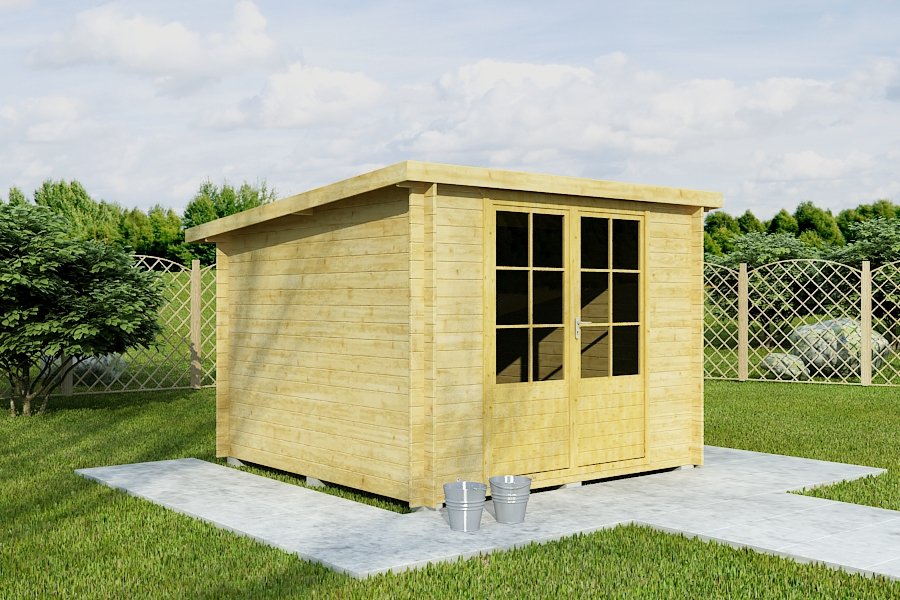
When to Replace Shed Floors and How to Do It
Without a floor, sheds can quickly rot and mold over time, which poses serious health hazards if inhaled.
Know when and how to install a new floor is vital when maintaining or renovating a shed, and this article can assist with both tasks.
Repairing Damaged Shed Floors
If you are storing heavy equipment in your shed, the floor must be capable of supporting its weight while protecting items within it from shifting and being damaged. Regular inspection of shed floors for damages and any necessary repairs must include use of suitable materials when repairs need to be completed.
Sheds were designed primarily as outdoor storage facilities, but they can become much more than that if used as offices, gyms, man caves or workshops. If this is the case for you then finding comfortable flooring that looks good will be key. Before deciding what kind of floor you want for your shed.
Concrete, OSB and plywood all make great options for shed floors, with concrete being the most cost-effective yet costly option. Concrete also tends to be cold and hard on feet when not sealed properly if unprotected with proper sealant. OSB may be another good choice, although its aesthetic may not match that of either concrete or plywood and it doesn’t offer the same moisture resistance and cleaning ease as its counterparts.
Plywood is an affordable and simple option to install, making it less expensive than concrete while offering more aesthetic appeal than OSB. However, plywood doesn’t fare as well against moisture intrusion, and may become susceptible to rot and mold growth over time.
Carpet is another cost-cutting choice, yet not very long-lasting. It can absorb liquids, stains and odors while encouraging mold growth in its shed.
Based on how you use your shed, investing in a new floor may be worth your while. Not only will this enhance its overall appearance and protect belongings from being damaged; but installing one also adds comfort and value. An old floor could even be damaging valuable belongings as well as inviting pests like bugs into your space; installing a new one prevents this and will extend the lifespan of your shed!
Buying a New Shed Floor
Before making your choice, it is wise to carefully weigh all available flooring materials before making a decision. Options available to you include concrete, OSB and pressure-treated plywood – each offering their own advantages and disadvantages. Concrete may be more long-lasting but more costly. OSB may cost less but is less moisture resistant and susceptible to damage by water than concrete is; pressure-treated plywood offers a compromise between cost-cutting alternatives like OSB while still offering foot comfort benefits if you plan to spend much time in your shed.
Based on your intended use for your shed, choosing the type of flooring can have a direct effect on its longevity and maintenance costs. If you plan to store heavy items such as lawnmowers, sturdy flooring material will be needed. When used as a workshop space or converted into living quarters (such as home office or man cave) then investing in something insulated with good aesthetic appeal would also help.
Regular shed maintenance is key to keeping it in good condition and prolonging its lifespan. Missing roof shingles might seem inconsequential at first glance, but even small leaks caused by missing or worn-down shingles could create leaks that damage interior walls and flooring, necessitating costly repair bills later. Furthermore, cleaning regularly to remove dirt and debris will reduce mold growth inside your shed; additionally if any signs of wood rot arise make sure to inspect its foundation or base to minimize moisture damage and ensure safety for all belongings stored therein!
Installing a New Shed Floor
A sturdy floor is essential if you plan on storing heavy items in your shed. Water-proofing the floor is also beneficial, helping protect belongings from mold and rot. Concrete or wood-based solutions may work, depending on your preference; for wood solutions it’s best to choose pressure-treated plywood which resists rot. Be sure to seal off cut ends of plywood to avoid further decay!
No matter if you’re starting from scratch or repairing an existing shed, the first step should always be laying a solid base for it. A layer of concrete or another suitable foundation will do. Once this step is completed, construction of the floor can begin; measure its base dimensions before marking them onto plywood sheets for cutting to ensure an exact fit before placing and fastening with 3″ framing nails.
As you select materials for your shed floor, keep both budget and storage needs in mind when making a decision. Linoleum may be budget-friendly but may not be ideal for heavy items due to damage from sharp objects. Vinyl flooring provides more durability as well as easy care maintenance but may scratch easily over time.
If you want to save money, OSB (Oriented Strand Board) could be the solution for your shed floor needs. OSB offers an economical alternative that is load-bearing comparable to plywood but lacks moisture resistance and may swell when exposed to moisture; to combat this, apply wood preservative along the edges before installing in your shed and move at least 12″ from its edge when installing for optimal strength and prevent any sagging issues. It is also crucial that its subframe be sealed adequately to prevent humidity intrusion as this will prevent mold growth from entering and hindered entry of fungi/humidor the subframe should also be properly sealed to avoid humidifying atmosphere that might attract humidity from getting inside.